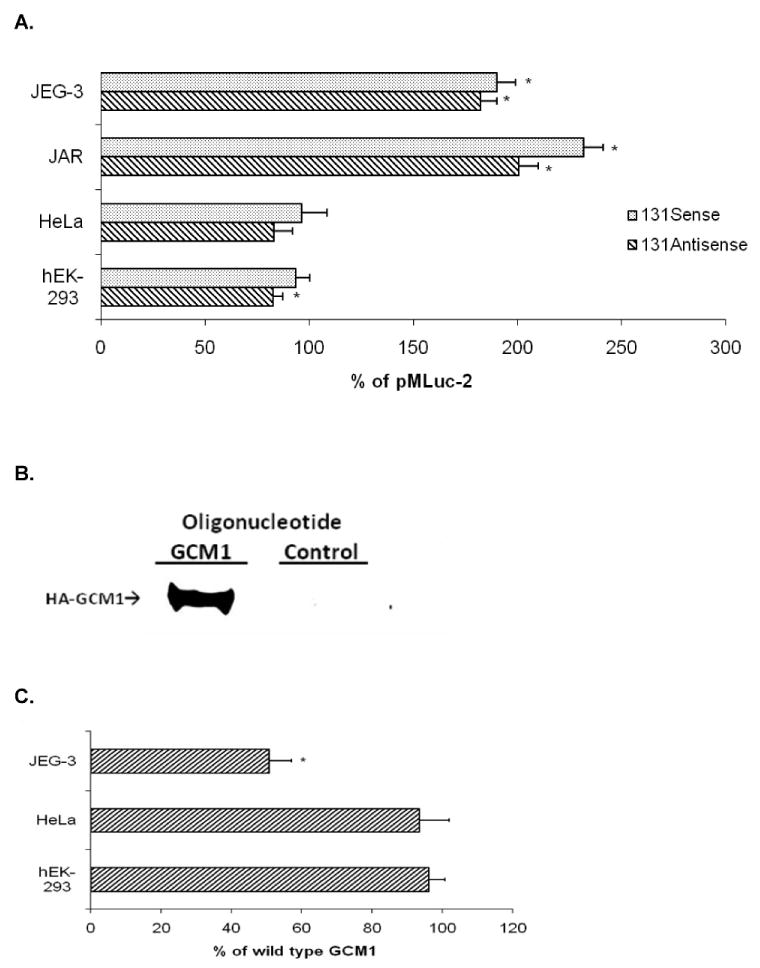Fig. 5.

PGF (−828/−698) region enhances basal promoter activity in trophoblast but not nontrophoblast cells. A) JEG-3, JAR, HeLa, and hEK-293 cells were transfected with 1.5 μg of pE173-MlucS or pE173-MlucAS clones and 0.5 μg of pRSVLuc. Statistical analyses compared promoter activity of each individual clone with its parental control clone pMLuc-2 (set to 100%) in each cell type (*, P < 0.005). B) Nuclear extracts from hEK-293 cells previously transfected with pHA-GCM1 were incubated with bead-conjugated oligonucleotides containing either three copies of the putative GCM1 motif from human PGF (GCM1) or corresponding scrambled sequences (control). Western blots for HA-tagged GCM1 (HA-GCM1) were carried out to examine the binding ability of the GCM1 motif. C) GCM1 element of PGF (−828/−698) region in pE173-MLucS was mutated and transfected into JEG-3, HeLa, and hEK-293 cells. Activity of mutant GCM1 element relative to wild-type activity in each cell type was plotted (*, P < 0.005).
